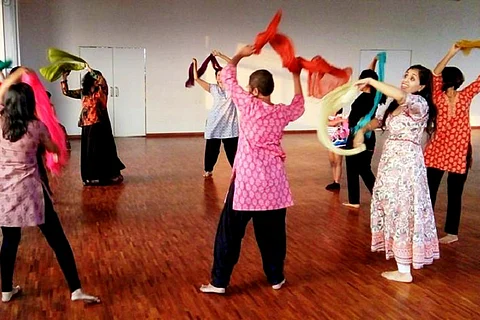

"It was the time after my high-school examination, that I felt, I was unable to concentrate on anything. Not only did I try to seclude myself from friends and family, I even for one point thought, probably life has nothing new to offer. With my love for dance, and curiosity to try something new, I then decided to walk into a dance therapy session. After attending a couple of sessions, I realised, this is what I was in need of," says Bengaluru-based Anuresha Sinha (name changed).
Considered one of the most liberating ways to express one's feelings using the body as an instrument, dance is a way of communication. Beneficial for both physical and mental health, the art form is also popularly used as a therapy to help individuals deal with personal difficulties.
In Bengaluru, according to experts, dance therapy has attained much recognition, and is being embraced by different groups of people.

Tripura Kashyap/Facebook
For Tripura Kashyap, a well-known dance therapist, a series of coincidences have shaped her art, as well as her life. She recounts in her book titled "My Body My Wisdom- A Handbook of Creative Dance Therapy" while studying dance/movement therapy in the US she learnt "how informal, non-traditional approaches in dance helped both able and disabled people evolve individualised styles of body expression and communication".
Tripura's brother Pavan "who was wheelchair bound with polio-meningitis loved music. As his favorite songs came on, he would use his upper body and hands to bang on his wheelchair and almost slide out of it. Sometimes we would sway our bodies in unison to the songs he loved."

Tripura Kashyap/Facebook
She says people in Bengaluru are open, receptive, curious, and not suspicious of something that is alien to their usual routines.
After her return to India, she started working in the city.
During her training in classical dance at Kalakshetra- an arts college in Chennai- Tripura observed "two visually impaired boys learning to sing and play the flute". She states that the two boys moved their bodies beautifully in response to the music they created, "seeming to express the very essence of their personalities".
This experience gave her the idea of how movements, if creatively used, could help individuals with disabilities, and with other personal hardships.
.jpg?w=640&auto=format%2Ccompress)
Tripura Kashyap (left) during one of her sessions
As the therapy is increasingly being adopted by people, it is being undertaken in various institutions, and is also being facilitated by more organisations today, some of which include, special schools, hospitals, de-addiction centres and dance schools.
It is also being adopted by corporates to help employees reduce stress, relax, and perform better.

Tripura says, the idea is to explore the therapeutic potentiality of Indian dance forms. Apart from centres of therapy for children and professionals, there are also centres that conduct training programmes for special educators, teachers and mental health professionals.
A dance therapy workshop has no boundaries. It is inclusive in nature, and welcomes people of all ages and socio-economic backgrounds.
Veteran Odissi dancer Sharmila Mukherjee, believes that movement therapy is an amalgamation of mime and movement. It is not based on one form, it is a therapeutic thing, and is created through use of traditional and modern dance forms along with yoga and basic gestures of the body.

Sharmila Mukerjee/Facebook
Children with hearing impairment, Sharmila says, emote through expression and gestures. "Since they are unable to hear the music, they get restless, and their energy gets channeled through dance," she adds.
However she also says that there is a lack of expertise in the field. While a lot of good work is being done, not everyone in the space is qualified enough to teach and help with the therapy.
Recounting experiences from the production of Ramayan, which was done as a fund raising event by 50 hearing impaired children, Sharmila mentions, "The rehearsals took place for six months as they need more time to grasp the rhythm and movement. A lot of mime, acting, and abhinaya were involved, which they did very well after the story and characters were explained to them."
This performance, she narrates, gave the children self-esteem and confidence. "They taught me their sign language, and I taught them mudras, and devised a unique way to communicate with them," she says.